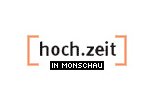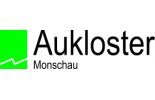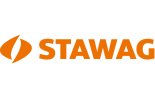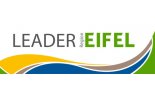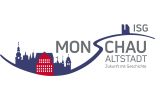City History
Monschau

The city originated around 1195 and takes its name from the castle situated on a mountain spur above the Rur River. It is mentioned for the first time in 1198 as Mons Ioci and then in 1217 as Munioie and as Monjoje in 1226. The name is a typical castle name from the setting of the Crusades. Walram of Limburg-Monschau, the first lord of the castle and subsequently the Duke of Castle Lim, is known as a crusader in the Holy Land in 1197.
Monjoye dominated the written form during the Late Middle Ages and in the Early Modern Times. Around 1800, the Montjoie form arose during the French rule in the Rhineland. By official decree, the name was “Germanized” into Monschau in autumn of 1918 as the result of the lost First World War and the ensuing Francophobia.
A formal bestowal of authorisation as a town does not exist, but there have been multiple confirmations of the customary rights as a town since 1476.
The town of Monschau had gained its municipal structure of today through the integration of the independent municipalities, Höfen, Imgenbroich, Kalterherberg, Konzen, Mützenich und Rohren on January 1, 1972.
Main features of the history

The Monschau Castle's location of today was established at the end of the 12th century by the Dukes of Limburg. It is the third castle complex following its predecessors in Reichenstein (today, a cloister on the Rur between Mützenich and Kalterherberg) and in Monschau (the Haller Ruin situated above the confluence of the Laufenbach and the Rur).
After the takeover of the Limburger Duchy by Heinrich IV in 1226, the lords of Monschau were established from the Limburger branch up to 1266. A united Monschau-Valkenburg territorial lordship followed from 1269-70 up to the extinction of the male line in 1352. In the subsequent Valkenburger succession dispute, the lords of Schönau-Schönforst as well as the Margrave of Jülich, among others, acquired the rights to the rule Monschau, which had finally fell to the Duchy of Jülich as a commission in 1435. French revolutionary troops entered Monschau in 1794. After the recapture of the areas on the left side of the Rhine River and in accordance with the decisions of the Vienna Convention, Monschau went to Prussia in 1816. In 1856, a Prussian town order was granted to the Rhine province.
The castle had been continuously developed up to the 17th century. Under the Monschau-Valkenburger reign, it had undergone an extensive enlargement including an outer ward with a spacious chapel. This further included an encircling wall with three gates for the settlement that had additionally originated on the eastern foot of the castle mountain in the meantime.
The municipal development proceeded hesitantly. A tax granted in 1489 served for the maintenance of the fortification. During the Guelderian Wars, Monschau was conquered by imperial troops in 1543. The castle was severely damaged and the town was completely destroyed from the tower house to the rear gate. Only in the course of the rebuilding did the development extend northward past the town walls to the Laufenbach and its confluence with the Rur downstream. Initially Brandenburg-occupied in the Jülich succession dispute of 1609, the Pfalz-Neuburger competitor, Wolfgang-Wilhelm, captured the city and castle with the help of the Spaniards in 1622 in order to ultimately assume dominion. With this, the rise to more town-like qualities began, particularly since the town and its surroundings remained largely spared from the destruction and plundering of the Thirty Years' War and the subsequent wars. Among other things, there are indications of this from the introduction of town accounting, the opening of an elementary school and the construction of a city hall in 1654 as well as the construction of an independent church of its own when the parish separated from the then existing Konzen parish in 1639 (consecration in 1650).
As the result of a quick takeover in September,1944 by the American military during the Second World War, Monschau remained largely undestroyed in comparison to the towns in the surrounding regions that, to some extent, were fiercely embattled.
City of the cloth makers

The location far-removed from thoroughfares and the chaos of war allowed for a widely undisturbed development of an infrastructure for high-quality woollen cloth production in the 17th century. Contrary to a much-repeated depiction, these were not Aachen religious refugees, but rather local families (Schmitz in Monschau, Offermann in Imgenbroich) that had expedited the new trade. Spanish merino wool was already being processed in the first decades of the 18th century. Nevertheless, the location had to struggle with serious problems in selling its wool as the result of the lacking on-site marketplace and the privileges of the older production sites in the Duchy of Jülich.
The breakthrough to a European-wide prestige for the fine cloth production had succeeded through the fact that Johann Heinrich Scheibler (1705-65) overcame the territorial impediments of the house-to-house peddling through his entrance into the wholesale trading sites as a leading enterpriser and turned the Monschau cloth into branded goods. The heyday of this fine cloth production was in the second half of the 18th century. This era of cloth manufacture is marked by the fact that it gradually progressed from the initially practised workshop system into a concentration of all working stages in a factory building. The structural fabric of the city centre from the time of the cloth makers in the 17th and 18th centuries has been fundamentally preserved and includes the splendid town houses such as the “Red House” and the “Haus Troistorff” that were also manufacturing facilities at the same time as well as the larger production sites in the old town centre.
The invasion of French revolutionary troops in 1794 had initially brought about a deep slump as the result of confiscations and the loss of old sales markets, but the modernisation and mechanisation by the surviving operations had accelerated from around 1800 onward. The successful consolidation was grievously disturbed by the subsequent connection with Prussia. Despite the occasional upturns in the 19th century, the cloth manufacturing was no longer able to return to the success of the 18th century. Enterprisers migrated to East Europe (Lodz, Brünn) or turned to other textile sectors (spinning mills, synthetic wool fabrics and synthetic silks, among others).
From the middle of the 19th century, the location of Monschau lost its connection with industrial development. The opening of the Vennbahn of Aachen (1885) could not stop the trend. The population figures continually decreased in the 19th century; from 3020 inhabitants in 1816 to 1865 in 1905. The last cloth factory closed in 1908 and the remaining textile trade ground to a halt in the 1960s.
The town districts
6 idyllic villages that have won awards and distinctions in numerous competitions surround the Old Town from high above. One can live in tranquillity and in close connection with nature or take a holiday here.
Imgenbroich
Imgenbroich is the shopping centre of the region. However, there is direct access to a network of paths in the village centre, e.g., to the Belgenbacher Mühle, to Eifelblick Grünenthal via quiet paths or to the remains of Siegfried Line (Westwall) by way of the hedgerow landscape. The eBike rental company is located near the multimedia printers’ museum. Among other things, the Vennbahn Cycle Route can be reached quite comfortably from here.
Höfen
Splendid beech hedges and old Venn houses characterise the view of this idyllic village that will equally inspire hikers on the Eifelsteig whether on the Hedgerow Footpath or the Wildnis Trail. The weaving mill museum and the National Park Gateway as well as the Haus Seebend, a well-known starting point for the narcissi walking tours in the spring, are situated in this village.
Kalterherberg
The Eifel-Höhen Route, the Rur Riverbanks Cycle Route and the Vennbahn are ideal destinations for cyclists as well as for hikers on the Cloister Route or for tours on the High Fens and the narcissi blossoms in the Perlenbach and Fuhrtsbach valleys. In the middle of the village, the “Eifeldom” towers over the old farmhouses. Kalterherberg is the most popular starting point for Venn walking tours and those who would rather move at a quicker pace may rent a railbike or Segway.
Konzen
Konzen is the oldest village in the Monschauer Land. The Carolingian Königshof (Royal Court) and status as a central site with Monschauer Land's mother church beckon to a path of adventure on the trails of Kaiser Karl up to the High Fens. At the same time, Konzen is also an ideal starting point for hiking in the raised bog or for riding a bicycle on the Vennbahn.
Mützenich
Whether on the move on old smuggler paths, wooden footbridges or the Eifelsteig, hikers setting out from Mützenich will find a large selection of tours with marvellous views, e.g., at Eifelblick Steling or on the observation tower along the bog route. The “Uraalt Scholl” museum of local history lies in the middle of the village and those who have a love for nostalgia can embark on a roundtrip with an old-timer tractor.
Rohren

Surrounded by woods and meadows, Rohren is also an ideal starting point for hikers on the educational forest path (Waldlehrpfad) to the saw mill in the Kluckbach valley and to the Lourdes Grotto. The summer and winter sports centre offers mountain biking in the summer and bobsleigh runs or cross-country runs and cross-country skiing in the winter. Rohren is also a starting point for marvellous forest hiking on a unique educational nature path.









